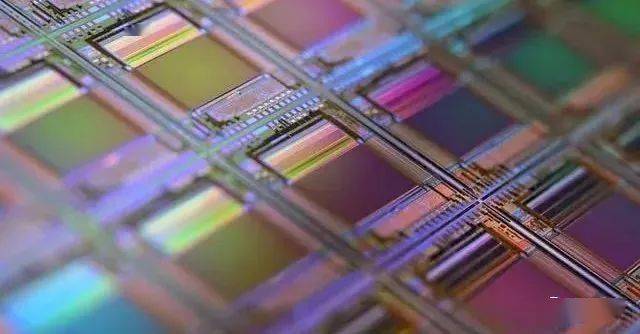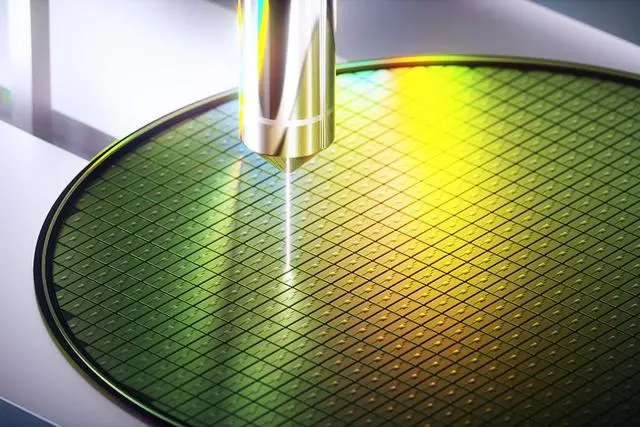Another national silicon photonics laboratory has landed in Shanghai, which will promote the scale of silicon photonics chip industry
Release:
Release:
Recently, in order to solve the non-standard problem in the design and processing of silicon photonic chips and promote the scale and standardization of the silicon photonic chip industry, the "National Integrated Circuit Innovation Center-Silicon Optoelectronics Joint Laboratory of Cyrel Technology" was officially unveiled in Zhangjiang, Shanghai.

The joint laboratory will advance a series of cutting-edge silicon photonics technologies such as silicon III-V heterogeneous integrated lasers and amplifiers, all-silicon photodetectors, high-performance microring resonators based on thin-film lithium niobate, waveguide coupling structures based on 3D lithography technology, optical quantum devices, tunable silicon interferometers that can be connected to neural networks, etc., so as to realize silicon photonics technology in photoelectric co-packaging high-rate optical interconnection interface, high-performance neural network optical computing, virtual and augmented reality, biosensing and medical, Applications and products in the fields of automotive autonomous driving.

In recent years, Shanghai has clearly proposed the development of photonic chips and devices, focusing on breakthroughs in the research and development and application of a new generation of photonic devices such as silicon photonics, optical communication devices, and photonic chips, and carrying out key research on photonic device modular technology, CMOS-based silicon photonic process, chip integration technology, optoelectronic integrated module packaging technology, etc. Silicon photonics will be included in the first batch of major municipal projects.
With the support of the policy, the National Integrated Circuit Innovation Center, the main body of the joint laboratory, was officially inaugurated in Shanghai in July 2018. Jointly initiated by Fudan University, SMIC and Huahong Group, the center plans to build a national integrated circuit common technology research and development platform around 2025 and build an integrated circuit common technology innovation institution with global influence.
Saili Technology is a fabless chip design company, established in Wuzhong, Suzhou in June 2021, committed to promoting the industrialization and scale of silicon-based optoelectronic integration. The company's team members graduated from well-known universities majoring in optoelectronics, and 60% of them have doctoral degrees; He has worked in a well-known company in the industry and has first-class semiconductor process and optical chip industry experience. Based on compound semiconductor materials, Cyrel Technology uses silicon-based CMOS, MEMS platform and advanced packaging technologies such as Chiplet and TSV to achieve high integration of optoelectronic chips, and its products are widely used in automotive electronics, high-speed data communication, biosensors, etc.
Previously, the opening ceremony of Cyrel's silicon photonics laboratory was held in Shanghai on August 23, marking an important step for Cyrel to enter the mass production of silicon photonics chips. At the unveiling ceremony, Zhang Ke, general manager of Saili Technology, shared the mental journey of silicon photonics chip research and development with all guests. As a fabless chip design startup, Cyrel Technology has invested tens of millions in the construction of the laboratory, realized chip-level, wafer-level photoelectric hybrid testing, packaging coupling testing, and completed the puzzle of the entire chain of silicon photonics chips from design, process, testing, and packaging.
As we all know, with Moore's Law reaching the bottleneck, silicon photonics technology has ushered in a wave of development opportunities, becoming a necessary measure to reduce IO power consumption and improve bandwidth. Silicon photonics technology is not a new technology that has emerged in recent years, and it has gradually formed a mature industrial chain in the global market.
In the global market, American companies represented by Intel, Cisco, Inphi, and Mellanox account for most of the shipments of silicon photonics chips and modules, occupying a leading position in the industry. In the domestic market, domestic manufacturers such as Huawei, Guangxun Technology, Hengtong Optoelectronics, Borche Technology, Zhongji Xuchuang, Huagong Technology, and Xinyisheng entered the market late, and currently occupy a relatively small market share, but with the continuous investment in this technology in recent years, the gap with foreign leading enterprises has gradually narrowed.
Previously, market research firm Yole had predicted that the SiPh market would grow from $455 million in 2018 to $4 billion by 2024, with a compound annual growth rate of 44.5%. Silicon photonics' share of the optical transceiver market is expected to expand from the current 20% to around 30% by 2027; Silicon photonics for consumer health devices is expected to grow at a CAGR of 30% to $240 million through 2027, and photonic processors for artificial intelligence and other high-end computing applications will grow at a CAGR of 142% to $244 million.
The current application scenarios of silicon photonics technology are mainly concentrated in the field of communications, and there is still huge room for growth in the non-communication market. Industry insiders believe that the application field of silicon photonics technology will continue to expand in the future, and the technology is about to usher in an outbreak in the fields of lidar, wearable devices, and AI photonic computing.

The joint laboratory will advance a series of cutting-edge silicon photonics technologies such as silicon III-V heterogeneous integrated lasers and amplifiers, all-silicon photodetectors, high-performance microring resonators based on thin-film lithium niobate, waveguide coupling structures based on 3D lithography technology, optical quantum devices, tunable silicon interferometers that can be connected to neural networks, etc., so as to realize silicon photonics technology in photoelectric co-packaging high-rate optical interconnection interface, high-performance neural network optical computing, virtual and augmented reality, biosensing and medical, Applications and products in the fields of automotive autonomous driving.

In recent years, Shanghai has clearly proposed the development of photonic chips and devices, focusing on breakthroughs in the research and development and application of a new generation of photonic devices such as silicon photonics, optical communication devices, and photonic chips, and carrying out key research on photonic device modular technology, CMOS-based silicon photonic process, chip integration technology, optoelectronic integrated module packaging technology, etc. Silicon photonics will be included in the first batch of major municipal projects.
With the support of the policy, the National Integrated Circuit Innovation Center, the main body of the joint laboratory, was officially inaugurated in Shanghai in July 2018. Jointly initiated by Fudan University, SMIC and Huahong Group, the center plans to build a national integrated circuit common technology research and development platform around 2025 and build an integrated circuit common technology innovation institution with global influence.
Saili Technology is a fabless chip design company, established in Wuzhong, Suzhou in June 2021, committed to promoting the industrialization and scale of silicon-based optoelectronic integration. The company's team members graduated from well-known universities majoring in optoelectronics, and 60% of them have doctoral degrees; He has worked in a well-known company in the industry and has first-class semiconductor process and optical chip industry experience. Based on compound semiconductor materials, Cyrel Technology uses silicon-based CMOS, MEMS platform and advanced packaging technologies such as Chiplet and TSV to achieve high integration of optoelectronic chips, and its products are widely used in automotive electronics, high-speed data communication, biosensors, etc.
Previously, the opening ceremony of Cyrel's silicon photonics laboratory was held in Shanghai on August 23, marking an important step for Cyrel to enter the mass production of silicon photonics chips. At the unveiling ceremony, Zhang Ke, general manager of Saili Technology, shared the mental journey of silicon photonics chip research and development with all guests. As a fabless chip design startup, Cyrel Technology has invested tens of millions in the construction of the laboratory, realized chip-level, wafer-level photoelectric hybrid testing, packaging coupling testing, and completed the puzzle of the entire chain of silicon photonics chips from design, process, testing, and packaging.
As we all know, with Moore's Law reaching the bottleneck, silicon photonics technology has ushered in a wave of development opportunities, becoming a necessary measure to reduce IO power consumption and improve bandwidth. Silicon photonics technology is not a new technology that has emerged in recent years, and it has gradually formed a mature industrial chain in the global market.
In the global market, American companies represented by Intel, Cisco, Inphi, and Mellanox account for most of the shipments of silicon photonics chips and modules, occupying a leading position in the industry. In the domestic market, domestic manufacturers such as Huawei, Guangxun Technology, Hengtong Optoelectronics, Borche Technology, Zhongji Xuchuang, Huagong Technology, and Xinyisheng entered the market late, and currently occupy a relatively small market share, but with the continuous investment in this technology in recent years, the gap with foreign leading enterprises has gradually narrowed.
Previously, market research firm Yole had predicted that the SiPh market would grow from $455 million in 2018 to $4 billion by 2024, with a compound annual growth rate of 44.5%. Silicon photonics' share of the optical transceiver market is expected to expand from the current 20% to around 30% by 2027; Silicon photonics for consumer health devices is expected to grow at a CAGR of 30% to $240 million through 2027, and photonic processors for artificial intelligence and other high-end computing applications will grow at a CAGR of 142% to $244 million.
The current application scenarios of silicon photonics technology are mainly concentrated in the field of communications, and there is still huge room for growth in the non-communication market. Industry insiders believe that the application field of silicon photonics technology will continue to expand in the future, and the technology is about to usher in an outbreak in the fields of lidar, wearable devices, and AI photonic computing.
